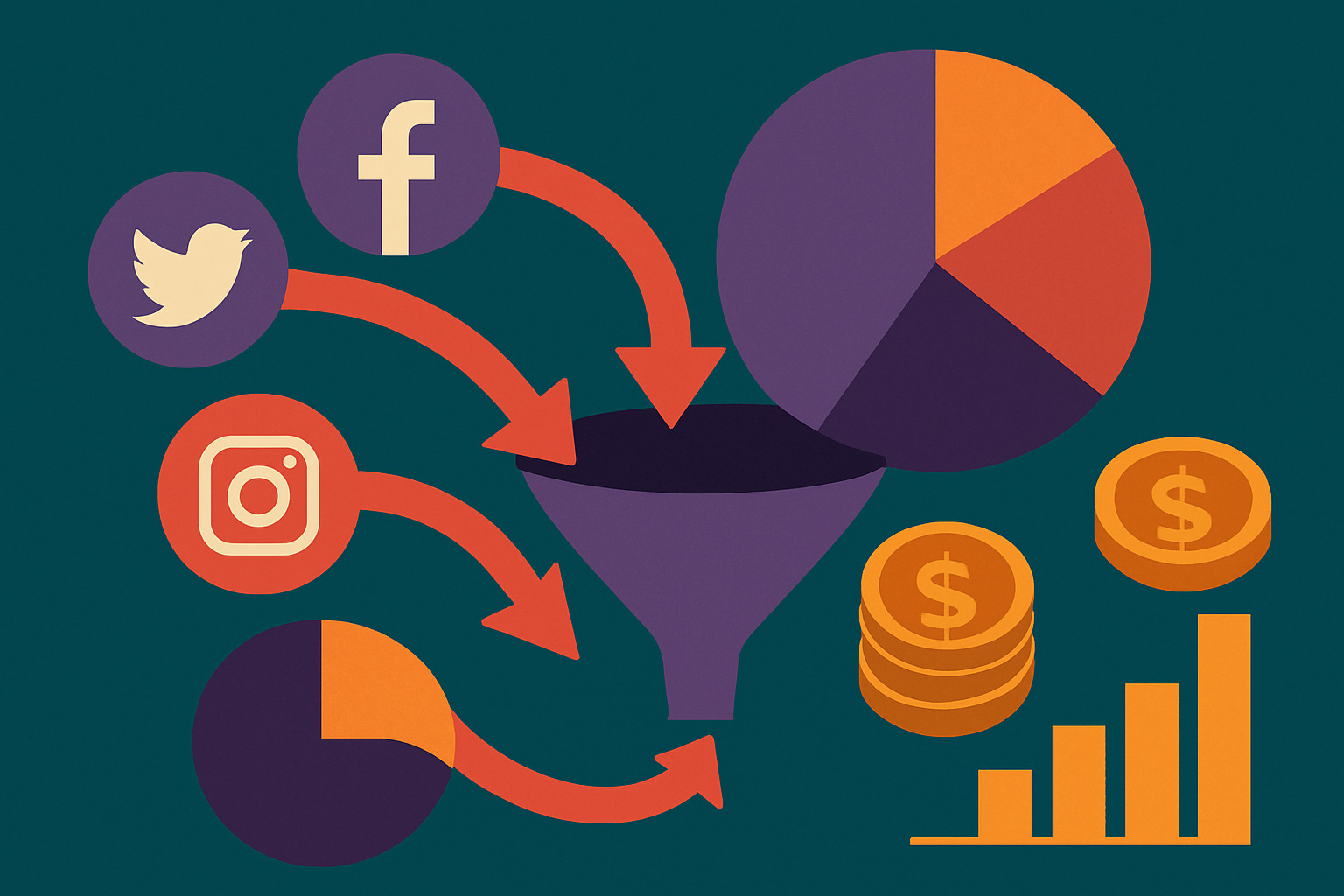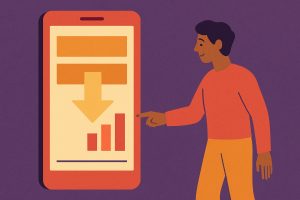Identifying Where Results Really Come From
Social media plays a vital role in building awareness, engagement, and sales. But when it comes time to decide where to allocate the budget, the question remains the same: “Which efforts actually drive results?” This is where attribution models come in. These models help determine which channel, post, or campaign truly influenced a customer’s purchase.
It’s not enough to look at likes or shares. You need to see the user’s entire journey—from the first ad impression to the final conversion. Attribution models help divide credit across each step, making it easier to see where the budget should be increased or decreased.
For example, one brand saw high engagement on Instagram. But using attribution data, they discovered more sales came from Facebook retargeting ads. Based on this, they reduced spending on Instagram and increased it on Facebook—not by guesswork, but with data-backed insights.
Different Models, Different Budget Outcomes
There are various types of attribution models. Some give all the credit to the first touchpoint (first-click), while others prioritize the final action (last-click). The chosen model directly impacts how budget is allocated across social media campaigns.
If a brand relies only on the last-click model, it’s likely that retargeting and conversion campaigns receive most of the funding. But using a linear model also reveals the value of awareness posts or educational content, as part of the customer’s decision-making journey.
One clothing brand always relied on last-click data, funding only retargeting ads. But after switching to a time-decay model, they saw that TikTok videos posted two weeks before checkout played a big role. With this new perspective, they increased investment in content creation.
Fairer Distribution of Budget
When a brand uses multiple channels, attribution models serve as a guide to fairly distribute budget. Not all success is seen at the bottom of the funnel—top-of-funnel efforts make quieter, yet crucial contributions.
For example, an influencer campaign might not immediately drive sales. But if it sparked curiosity and led the user to follow the brand, it’s still part of why they eventually made a purchase. The right model helps acknowledge this influence.
Many brands hesitate to invest in awareness content because it doesn’t convert instantly. But after using attribution data, they realized many buyers first engaged with what they thought were “just filler” posts. From then on, they allocated their budget more evenly across the funnel.
Determining Which Social Media Channels Perform Best
With so many platforms—Facebook, Instagram, TikTok, Twitter, YouTube—it’s tough to identify which ones contribute most. Instead of relying on vanity metrics like likes and views, attribution models reveal each platform’s real impact.
Using a data-driven approach, brands can see which channels drive traffic, leads, or actual purchases. A TikTok video with 200,000 views may contribute less than an Instagram post with 500 link clicks.
An app developer used an attribution model to identify which platform drove the most downloads. They assumed Instagram was the top performer, but the model showed a Twitter thread with a case study brought in more engaged users. From then on, they gave Twitter a larger share of the budget.
More Accurate Goal-Setting Using Data
Knowing where results come from makes goal-setting easier. Attribution models act like mirrors, showing how effective each part of your strategy is. With a clear picture, targets become more realistic and achievable.
Before increasing ad spend on a platform, it’s crucial to see if it actually delivers. Attribution models are not just measurement tools—they’re strategic guides based on real user behavior.
One skincare brand considered increasing their influencer marketing budget. But attribution data revealed most sales came from in-house video tutorials. They shifted strategies and built an internal creator team. This cut costs while boosting returns.
Identifying Weak Points in the Funnel
Not every part of the sales journey is strong. Some points are weak links, and failing to identify them wastes budget. Attribution models help locate breakdowns in the conversion path—and reveal what kind of social content needs improvement.
Click-through rates from story ads may be high, but if website retention is low, there’s a gap. Or maybe inquiries are high, but conversions are low. The model shows where drop-offs occur and which content is missing.
A home decor brand discovered from attribution data that many viewers came from Instagram Reels, but few converted. Upon review, they realized they lacked product detail posts. They added highlight stories and saw a significant conversion increase the following month.
Optimizing Ad Spend in Real Time
A major benefit of using the right attribution model is real-time insight. You don’t have to wait weeks to understand performance. This allows for quick adjustments to budget and creatives.
If a campaign is underperforming, you can immediately tweak the call to action, audience targeting, or content format. Real-time attribution makes it possible to stay flexible without wasting ad spend.
A clothing retailer monitored their Valentine’s campaign using an attribution tool. Within five days, they saw short-form IG Stories videos outperforming carousels. They quickly cut the underperforming creatives and shifted budget to what worked best.
Balancing Branding and Performance Goals
Not all social efforts are about immediate sales. Branding plays a critical role too. But how can you measure it? Attribution models that assign partial credit to early-stage touchpoints help recognize the value of branding in the overall strategy.
A full-funnel view prevents the content from becoming overly sales-driven. It allows room to appreciate brand trust, recognition, and consistency. These are foundations for long-term customer loyalty.
One startup focused on awareness videos to introduce their new app. Initially, it seemed the videos weren’t driving sales. But after using a weighted attribution model, they discovered these videos played a major role in the user journey. They didn’t convert immediately—but they became warm leads for future retargeting.
Better Planning for the Future
When attribution data is clear, planning for the next quarter or campaign becomes easier. It’s not based on guesses—decisions from ad spend to content mix are informed by past performance.
This approach isn’t just for big brands. Even small businesses can benefit. What matters is having a system and not relying solely on hunches or likes.
One local café launched a loyalty program and used attribution models to identify which posts led to sign-ups. The next month, they replicated their top-performing content strategy. Membership grew, and ad costs dropped.
Smarter Social Media Budgeting Through Attribution Models
Allocating social media budget shouldn’t be based solely on impressions. With so many channels and content types, you need to know what truly works. Attribution models provide the guidance to divide resources for more effective results.
When you have a clear picture of the customer journey, every decision carries more confidence. The budget is no longer just an expense—it becomes an investment for long-term growth. And here, the attribution model serves as your most trusted ally.











No responses yet